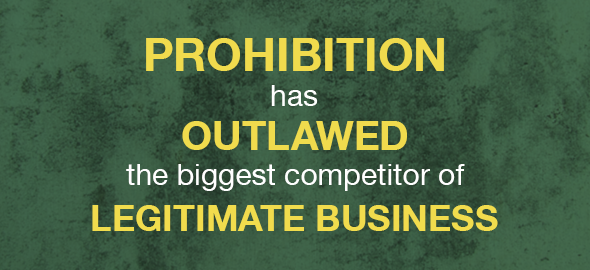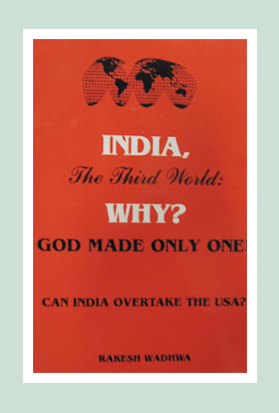Prohibition: Archaic Remedy That Failed (Part 4)

Read Part 1, Part 2 and Part 3 of this series of articles.
What goes around, comes around and the buck stops only when the head understands the cost of doing things without a long-term vision and in the absence of a rather basic respect for the rights of others. Just as the US government had spent huge effort and money prohibiting alcohol; it took on another bugbear with little thought to its workability by trying to remove anything that might require its citizens to exercise personal choice.
Up in Smoke
In other words, no sooner had the ice tinkled back into glasses across America, powers that could start regulating other substances raised their ugly heads. In 1937, the Congress passed the Marijuana Tax Act that purported to extract revenues from drugs. What it did was simply outlaw the sale and possession of marijuana. By 1952, the Boggs Act reinforced the prohibition and then came Richard Nixon.
The halcyon paranoia that riddled America in the late 1960s and early 1970s saw the advent of Nixon’s war on drugs. Nixon placed cannabis in the Schedule 1 of the Controlled Substances Act passed by the Congress in 1970. The concept of being able to categorize drugs has come under a lot of scrutiny. Over the past 60 years, the US penal system has admitted to have countless cannabis smokers put behind bars, and wasted billions of dollars in the process, instead of focusing on actually harmful drugs like opium and cocaine! The second biggest mistake in mindless categorization was to make cannabis a ‘gateway drug.’ By banning it, the government ensured that the only access citizens could have to marijuana was through the same network that smuggles and sells illegal drugs that are far more addictive and dangerous. The average citizen, now exposed to dealing with criminal elements, get tempted to try harder substances. As they say, the road to hell is paved with good intentions. Here’s where the drug wars became a war against individual constitutional rights.
Paranoia Produces Policing Paradoxes
In a free society, it’s possible to police violent and intrusive crimes to a minimum. But it’s not possible to stop victimless crimes. In their pursuit of drugs, the police need to rely on informers who are usually criminals trying to bargain for softer sentences. Sting operations become common and your privacy is no longer your property. Your bank records, premises, emails and phone calls can be searched without your knowledge. Finally, an ordinary US citizen could be placed behind bars on the basis of a known drug dealer’s testimony with no need for any hard physical evidence. Search warrants based on anonymous tips became common. Being too well dressed or having a flashy car was reason enough for the government to suspect you.
After 60 long years of trying to stop people from smoking, the US has finally allowed the decriminalization of marijuana and allows the widespread sale of this formerly banned substance for medical purposes across almost all states. They probably paid heed to the example of Amsterdam, where marijuana is legal and coffee shops sell cannabis based products openly. Strangely, the youth of Amsterdam are by and large not interested in smoking and the city has one of the lowest addiction rates among its youth in the world. You just can’t stop people from applying common sense, if you treat them like adults!
Governments need to realize that citizens cannot be fed programs and curbed by prohibition. Instead, they need to treat their citizens as adults and address the core issues of awareness which is lost behind the veil of prohibition. Clearly, where there’s a will, people will find a way. To me that is the essence of free will. That is the future I wish to see for my country as described by Tagore, where every head is held high on its own accord.
 Rakesh Wadhwa. Ever since, I was a school boy, I knew India was on the wrong path. Socialism was just not what we needed to get ahead. Government controlled our travel; government controlled our ability to buy and sell; and government controlled our freedom to move our money. My life has focused on the inherent rights people have. When I was in college, I never understood, what the governments meant by their "socialistic attitude". If people are free to buy, sell and move their capital themselves without any restrictions by state, then the welfare of people is inevitable & hence the countries they live in will become wealthy. The government has no right whatsoever, to point a finger at me or my business. I am not a revolutionary. I just want to light up my cigarette and not get nagged about it. I believe in non-interfering attitude to attain more.
Rakesh Wadhwa. Ever since, I was a school boy, I knew India was on the wrong path. Socialism was just not what we needed to get ahead. Government controlled our travel; government controlled our ability to buy and sell; and government controlled our freedom to move our money. My life has focused on the inherent rights people have. When I was in college, I never understood, what the governments meant by their "socialistic attitude". If people are free to buy, sell and move their capital themselves without any restrictions by state, then the welfare of people is inevitable & hence the countries they live in will become wealthy. The government has no right whatsoever, to point a finger at me or my business. I am not a revolutionary. I just want to light up my cigarette and not get nagged about it. I believe in non-interfering attitude to attain more. 
 The Bastiat Award is a journalism award, given annually by the International Policy Network, London. Bastiat Prize entries are judged on intellectual content, the persuasiveness of the language used and the type of publication in which they appear. Rakesh Wadhwa won the 3rd prize (a cash award of $1,000 and a candlestick), in 2006.
The Bastiat Award is a journalism award, given annually by the International Policy Network, London. Bastiat Prize entries are judged on intellectual content, the persuasiveness of the language used and the type of publication in which they appear. Rakesh Wadhwa won the 3rd prize (a cash award of $1,000 and a candlestick), in 2006.
What the readers are saying…